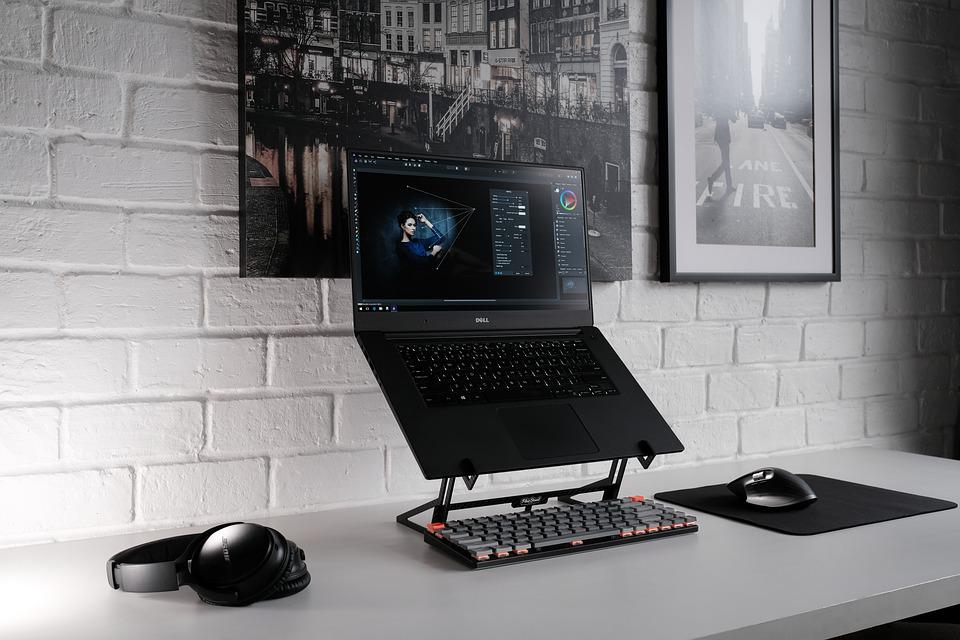
As someone who spends most of his day on a laptop, I’m always looking for ways to make my life easier. One option that’s become more popular in recent years is the laptop stand — a device that raises your laptop to eye level so you’re not hunched over or straining your neck as you type. But while they’re relatively simple, are they worth it? I decided to find out.
In today’s increasingly connected world, the laptop is no longer a luxury — it’s a necessity.
And while laptops are more portable than ever, they do present some challenges (in addition to their many advantages).
In today’s increasingly connected world, the laptop is no longer a luxury — it’s a necessity. And while laptops are more portable than ever, they do present some challenges (in addition to their many advantages).
Laptops are great for taking with you on the go and working from anywhere. But if you spend hours at a time on your laptop every day, it can become uncomfortable after prolonged use. Here’s why:
- Laptops are more compact than ever before and typically have less room for ventilation than larger computers. This means that heat will build up inside of them much faster than other devices — especially when there’s also a lot going on in terms of CPU usage or graphics rendering (which happens whenever you’re playing games). If this heat isn’t released properly over time through better thermal management systems within your device itself then it could damage sensitive components inside your computer such as its motherboard over time would lead to system failures or even permanent damage requiring repairs which cost money that most people don’t want spend unnecessarily!
Laptop stands aren’t new, but they’ve grown more popular in recent years.
While laptop stands aren’t new, they’ve grown more popular in recent years. While there are plenty of other ways to mitigate the issues presented by using laptops all day, a stand might be the easiest fix.
A stand will have you sitting up straighter and prevent you from slouching over your computer screen. It may also help with neck strain and back pain if you’re not already experiencing those symptoms from your current working position.
Additionally, many people find that their laptops overheat when left on their laps for long periods or placed directly on tables without any type of airflow (or even cooled down properly). This can lead to overheating issues that lead to crashes and bluescreens as well as cause long-term damage to internal components like CPUs and GPUs. By elevating your laptop off of surfaces like desks or tables—and preferably away from other major heat sources—you’ll be able to keep it running smoothly even after hours of continuous use!
Laptop stands are typically adjustable and lightweight

Laptop stands are typically adjustable and lightweight so you can position your laptop at eye level and type comfortably with your hands resting on the desk, rather than on your lap or in an unsupported position in front of your laptop.
There are two main types of laptop stands: stationary and portable. Stationary stands are often made from metal or plastic and can either be attached to a desk or positioned near a wall for quick access to power outlets. Portable stands to tend to be made from lightweight materials like aluminum, so they’re easy to carry around when traveling between meetings or friends’ houses—or even just down the hall at work.
Problems Associated With Laptop Usage
As convenient as laptops are, they were not designed to be used as a primary device all day every day. For instance, while the use of desktop computers has decreased significantly over the past decade, health issues like eye strain and neck and back pain have increased, according to research from the University of California at San Francisco.
If you’re someone who uses a laptop as your primary device, you know how convenient it can be. You can take notes in class, watch Netflix in bed and even write papers for school on the go. Unfortunately, laptops were not designed to be used all day every day. The health issues that arise from such excessive use include eye strain, neck pain, and back pain. Along with these physical ailments, there are other things to be concerned about as well:
- Decrease in productivity due to distraction (you’re staring at Facebook instead of working)
- Decrease in creativity because people are too focused on the screen rather than taking care of their mental health
Computer Vision Syndrome
Computer Vision Syndrome, or CVS, is a set of eye-related symptoms brought on by prolonged computer use. The symptoms are caused by the way the eyes work together with the brain to focus on objects in our environment.
When you look at something up close, your pupils get smaller (called accommodation) so that your retina can focus on it. When you look into the distance, your pupils get larger (called dilation) so that more light reaches your retina and you can see clearly.
But when you stare at a computer screen for hours on end, your eyes never have a chance to dilate fully. This makes it harder for them to adapt from looking at something very close-up back to looking at something farther away — a process called “accommodation.” For example: if you’re reading this article on an iPad or other tablet device and then look up at the person sitting next to you, it might take a few seconds for your eyes to adjust to seeing them instead of seeing double (or worse). That’s accommodation failure.
The good news is that computer vision syndrome is treatable!
The following are some eye strain prevention tips:
- Ensure that your major source of light (such as a window) is not beaming directly into your face or onto your computer screen.
- To avoid glare or reflections, tilt the screen slightly.
- Check to see whether the screen is too close to your face.
- Place the screen at or slightly below eye level.
- Adjust the parameters to lower the contrast and brightness of your screen.
- Look away from the screen and concentrate on distant objects.
- Have regular eye exams to ensure that any blurring, headaches, or other symptoms are not caused by underlying conditions.
Posture-Related Injuries from Computer Use

A computer is a powerful tool. It enables us to work from home, communicate with others through email and social media, and find entertainment in the form of movies, music, and games.
Unfortunately, many people spend hours each day sitting at a desk or computer terminal. In addition to causing fatigue and muscle aches, this sedentary lifestyle can cause serious health problems.
A variety of posture-related injuries are associated with computer use. These include:
Back pain: The spine is designed to bear up to seven pounds for every inch of height. Sitting for long periods compresses the spine, which can cause back pain and disc injuries.
Repetitive strain injury (RSI): RSI involves pain in the upper extremities from excessive repetition of motions such as typing on a keyboard or mouse clicking. When you perform repetitive movements with poor posture or grip strength, you increase your risk for RSI.
Carpal tunnel syndrome: This syndrome occurs when tendons in the hand compress the median nerve as it travels through the wrist causing numbness, tingling, and other painful sensations in the hand and fingers. Symptoms usually develop gradually over time but can be exacerbated by repetitive movements such as keying or mouse clicking
The question remains: Are such solutions worth it?

- The idea behind laptop stands is simple enough — raising your laptop screen to eye level results in better posture and could help alleviate some of the issues that come with prolonged usage. The question remains: Are such solutions worth it?
- While there are several benefits to using a stand, it’s important to consider how much value you will get from this device. For many people, the answer will be “not much.”
At $30 for a stand that supports up to 10 pounds and offers a variety of height adjustments, it’s fairly cheap when compared to most laptop accessories.
If you’re thinking about getting a stand for your laptop, I’m here to tell you it’s probably worth it. Laptop stands can be expensive, but they’re also pretty handy.
They vary in price, weight, and height adjustments. Some are made of plastic and others are made entirely of aluminum (or other metals). They all have different weights as well—some weighing up to 10 pounds! However, for $30 for a stand that supports up to 10 pounds and offers different height adjustments, it’s fairly cheap when compared to most laptop accessories.
Conclusion
Yes, it is worth it to buy a laptop stand. It is an investment that will pay off in the long run. You don’t have to spend a lot of money; you can find cheap ones online or at stores like Walmart or Target. They are not hard to use and they make your life so much easier.
Overall, these benefits outweigh any disadvantages that may come along with owning one of these products so I would recommend purchasing one if you don’t already have one!





